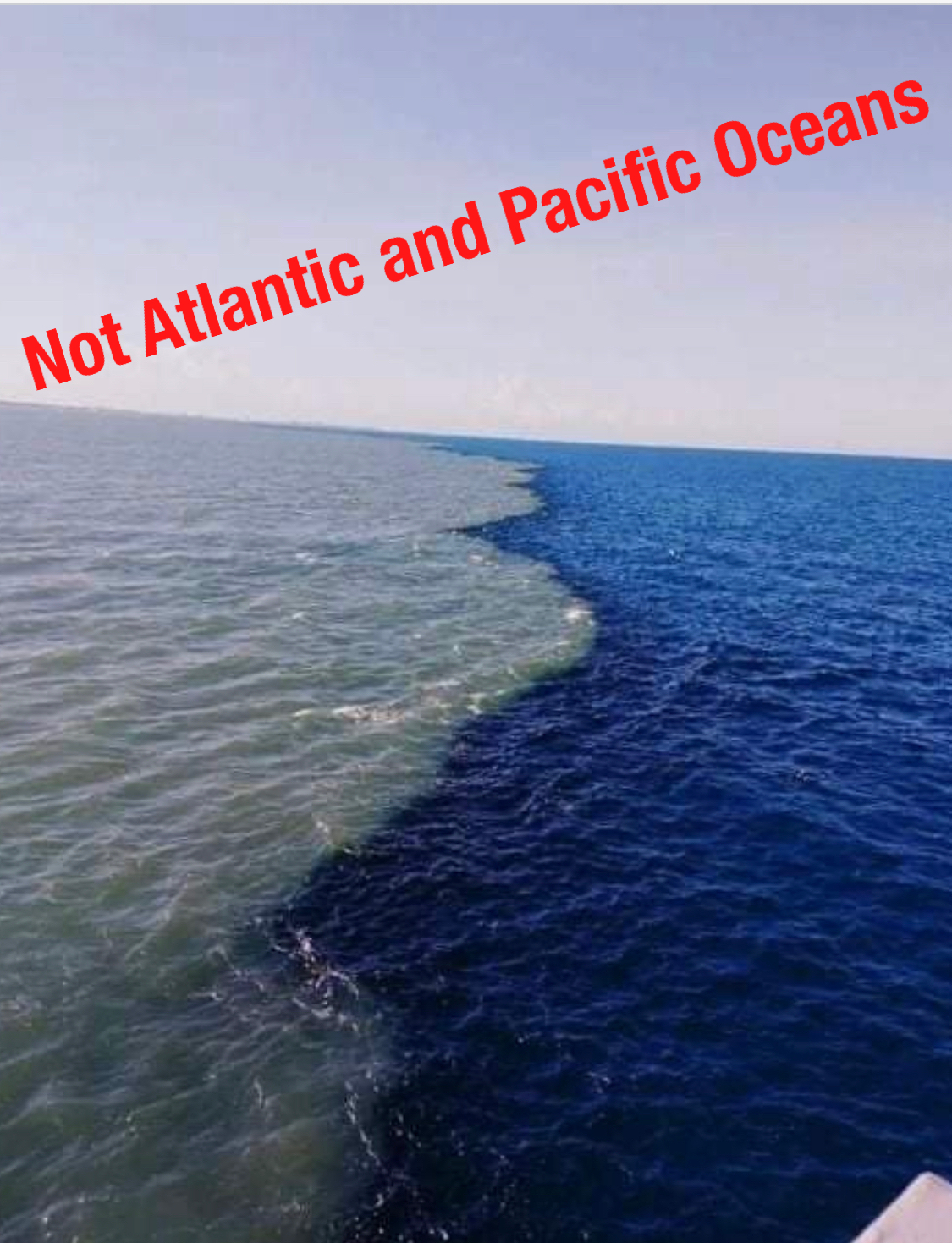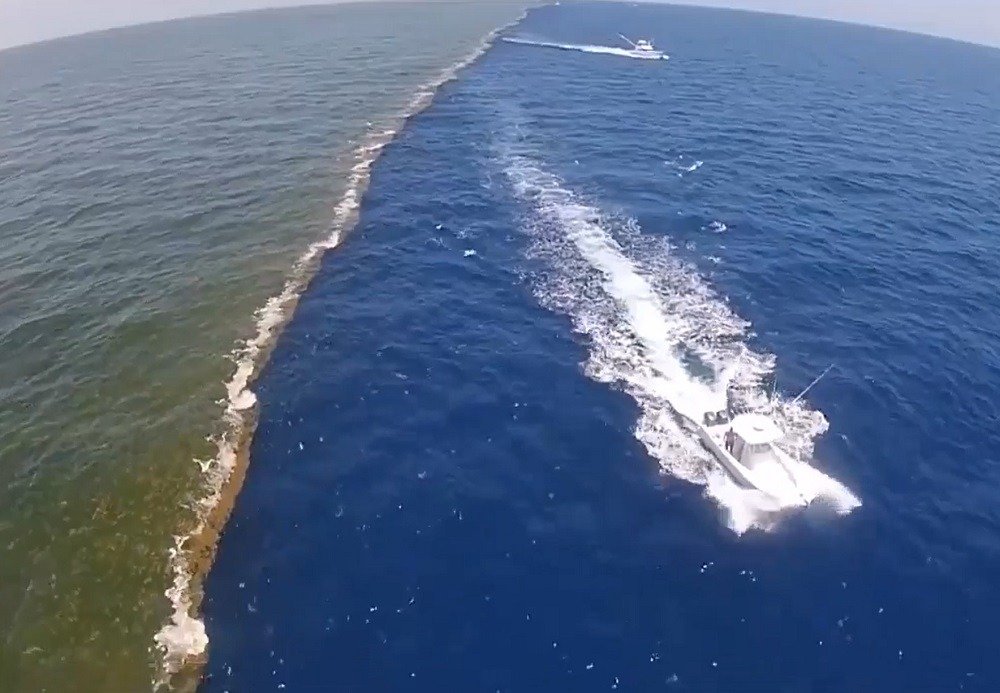What 2 Oceans Meet And Don't Mix

Ever heard of two oceans meeting but refusing to blend? It sounds like a wacky sitcom plot, right? Well, it's real and it's seriously cool!
The Unmixing of the Waters
Imagine a line in the ocean. On one side, the water is a certain color. On the other side, it's a noticeably different shade. They bump against each other, but they don't really *mix*. It's like a watery standoff!
This fascinating phenomenon happens in various places around the globe. One famous spot is near Cape Point, South Africa. Here, the Indian Ocean and the Atlantic Ocean decide to be frenemies instead of merging.
Why the Standoff?
So, why this oceanic awkwardness? Several factors play a role. Think of it like a complicated dance of water properties.
Temperature is a big one. If one ocean is significantly warmer or colder, it impacts the mixing. Salinity, or the amount of salt, also matters. Different salt levels create different densities.
Density is key! Water with higher density tends to sink. This prevents thorough blending with less dense water. Surface tension can play a role as well.
Think of it like oil and vinegar in salad dressing. They might mingle a bit, but they eventually separate. The oceans are similar, but on a much grander scale!
What Makes it So Entrancing?
Honestly, it's just visually stunning. The stark color difference is something you have to see to believe. It’s like Mother Nature decided to show off her artistic side.
It also sparks our curiosity. We’re naturally drawn to things that seem unusual or defy expectations. This unmixing is a puzzle that scientists are still fully unraveling.
Plus, it’s a great reminder of the power and complexity of our planet. The oceans are vast and dynamic. They're not just big puddles of water!
Where Else Can You Witness This?
While South Africa is a well-known spot, other locations offer similar sights. The Gulf of Alaska is another prime example. Here, the glacial meltwater meets the open ocean, creating distinct color differences.
You might also spot this phenomenon in areas where major rivers meet the sea. The outflow of freshwater creates a visible boundary with the saltwater.
Keep in mind, these boundaries aren't always perfectly sharp. They can shift and change depending on currents, tides, and weather conditions. But when they are visible, they're truly remarkable!
Is it Really *Not* Mixing?
Okay, technically, there is some mixing. It’s not like the oceans are completely isolated from each other. But the rate of mixing is significantly slower than you might expect.
The distinct visual boundary shows that the different water masses retain their properties for a considerable time. This allows us to observe the fascinating phenomenon of unmixed (or slowly mixing) waters.
So, next time you’re near a coastline, keep an eye out. You might just witness this incredible natural wonder. It's a reminder that our planet is full of surprises, waiting to be discovered!
Go explore! You might just stumble upon your own oceanic marvel. It will be an amazing experience.



.jpg)














